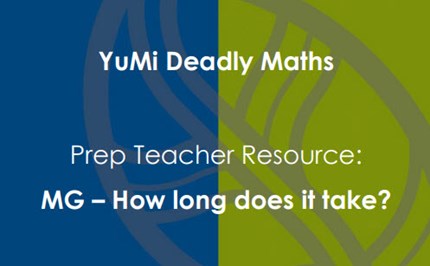How long does it take?
Students describe, compare and order the duration of events. They investigate the length of a day and sequence the different phases that occur within this time period.
Additional details |
|
| Year level(s) | Foundation |
|---|---|
| Audience | Teacher |
| Purpose | Teaching resource, Teaching strategies |
| Format | Downloadable resources |
| Teaching strategies and pedagogical approaches | Culturally responsive pedagogies |
| Keywords | RAMR, YuMi Deadly Mathematics |
Curriculum alignment |
|
| Curriculum connections | Numeracy, Aboriginal and Torres Strait Islander Histories and Culture |
| Strand and focus | Measurement, Build understanding |
| Topics | Time |
| AC: Mathematics (V9.0) content descriptions |
AC9MFM01
Identify and compare attributes of objects and events, including length, capacity, mass and duration, using direct comparisons and communicating reasoning |
| Numeracy progression |
Understanding units of measurement (P2)
|
Copyright details |
|
| Organisation | Queensland University of Technology |
| Copyright | © Queensland University of Technology. Creative Commons BY-NC-SA 4.0. |
Related resources
-
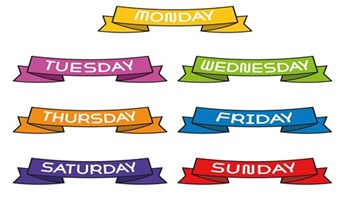
Time and duration: Foundation – planning tool
This planning resource for Foundation is for the topic of Time and duration.
Resource details -
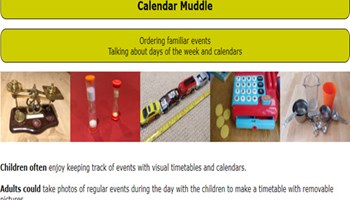
Calendar muddle
A guide for teachers and parents on talking about calendars and understanding when events happen.
Resource details -
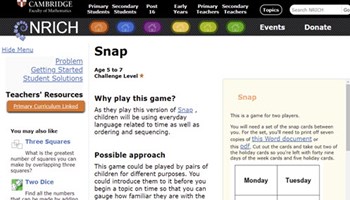
Snap
Play a version of the Snap game where students use everyday language related to time as well as ordering and sequencing.
Resource details -
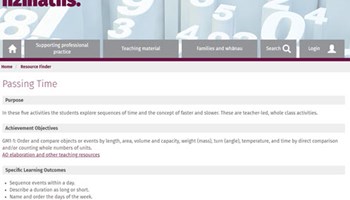
Passing time
In these five activities, students explore sequences of time and the concept of faster and slower.
Resource details
